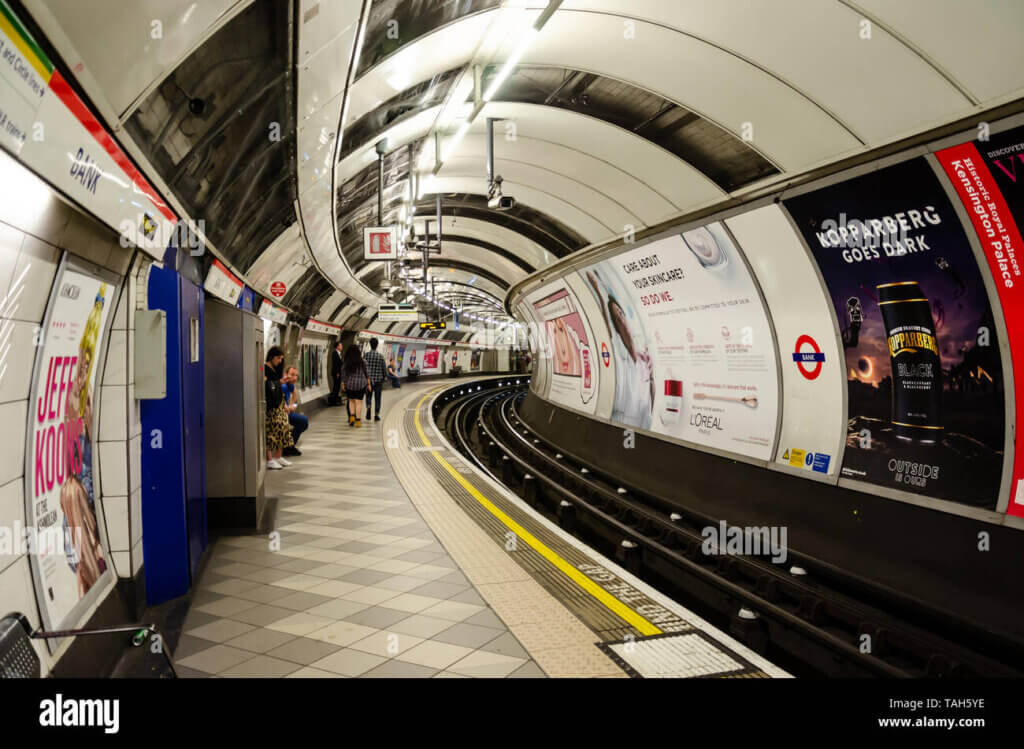
Introduction
In today’s fast-paced world, it is very important for brands to communicate the message across a diverse audience for their brand recognition and business growth. Transit advertising is one such form of versatile advertising that efficiently does the job, it uses innovative strategies to put its message across utilizing various forms of transportation, such as buses, trains, and subways, to showcase the brand and message.
Transit advertising is an organic and old-school way of communication, it is also one of the most popular and well-received forms of OOH (Out-of-home) advertising, transit ads have existed since streetcars first appeared in the late 19th century. The basic idea behind it is to captivate the audience while effectively conveying the message by strategically placing advertisements in high-traffic commuter hubs. By leveraging the constant influx of people passing by in these key locations, transit ads maximize engagement and broaden their reach, ensuring that the message resonates with a larger and more receptive audience.
The Unmissable Opportunity
Creating a moment!
Transit advertising is all about strategic placement, it creates an opportunity of visibility for itself by creating a moment. its placement creates an unmissable nature of appearance, unlike TV ads or social media ads where it is possible to skip or change the channel transit ads are in a fixed position which allows people to contact the message, the ads are in your face with the big banners, multiple posters, it is very hard to overlook these presentations.
Check out this ad that BBDO has created; a clever campaign by Pepsi that has a functional headphone jack embedded in it. If you plug in your headphones, you can hear various samples of music available through pepsiaccess.ca.
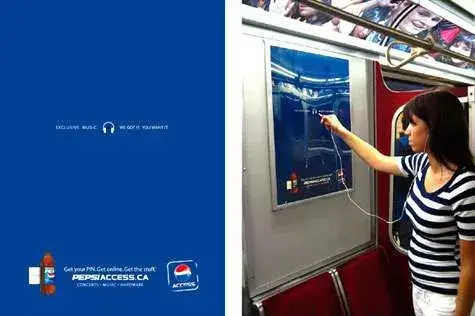
Not just that!
Transit ads have a way of working full time, every ad is presented 24/7, and the ads are constantly showcasing the brand with legit content, this consistent visibility makes the ad memorable for the viewers.
These ad presentations also create a great sense of engagement among other benefits.
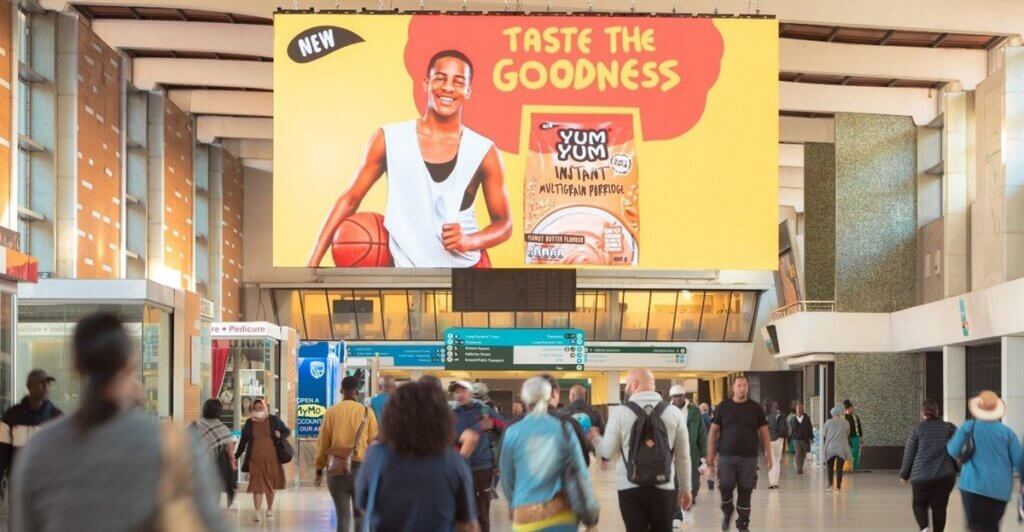
As we read along this post, we will try to understand transit advertising better with its types, where one might have seen it, its benefits, and how it affects and creates value in the world of advertising. Let’s begin!
Types of Transit ads
If you are a frequent user of public transport in your city or travel in buses or subways occasionally, you will have interacted with various ads and posters, most of these ads stay in your memory subconsciously, this is the power these ads hold. Let’s observe those ads better.
Subway and transit ads
These ads are typically placed in the subway station pathways along the line until the platforms and inside the subway, in subway stations, advertisements primarily take the form of posters strategically positioned on platforms and within the subway cars. The poster ads are designed for quick, repeated exposure to capture the attention of travelers and commuters. This deliberate approach ensures that the ads become memorable through frequent visibility.
Ads inside the subway vehicles are more message-oriented and feature clear calls to action. Given that subway passengers spend a minimum of 10 minutes on their journey and the mobile network is also disrupted, they have ample time to explore the surroundings. When they come across these ads, it’s common for them to take a moment to engage with the content and respond to any provided calls to action.
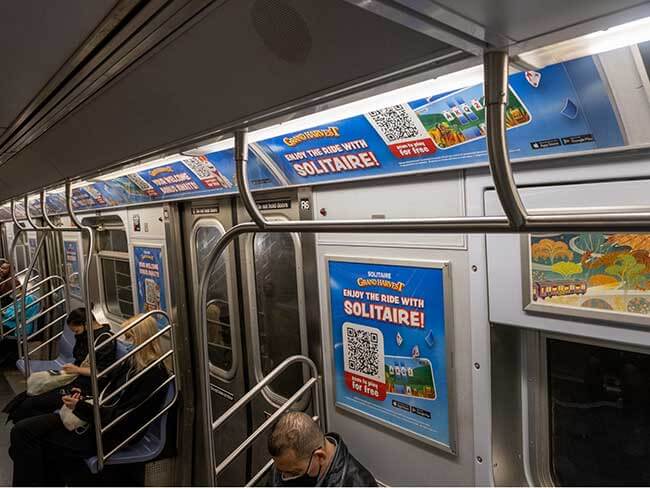
Bus shelter ads
bus shelter ads, also known as bus stop ads, are commonly seen at transit stops and terminals across various locations. These ads are incredibly versatile, which makes them a fantastic choice for advertisers looking to connect with a diverse and extensive audience.
One interesting strength of these bus shelter ads is its versatility and the way it can reach a greater audience which is basically everyone waiting for public transportation. It’s a prime opportunity for the message to be seen. It can connect with people from all walks of life, with various interests and backgrounds, which makes the brands even more interested in investing in this form of media.
What’s even better is the time people spend engaging with these ads. While waiting for their buses, passengers have at least 5 minutes of downtime. This is the chance to capture their attention, deliver your message, and possibly inspire them to take action.
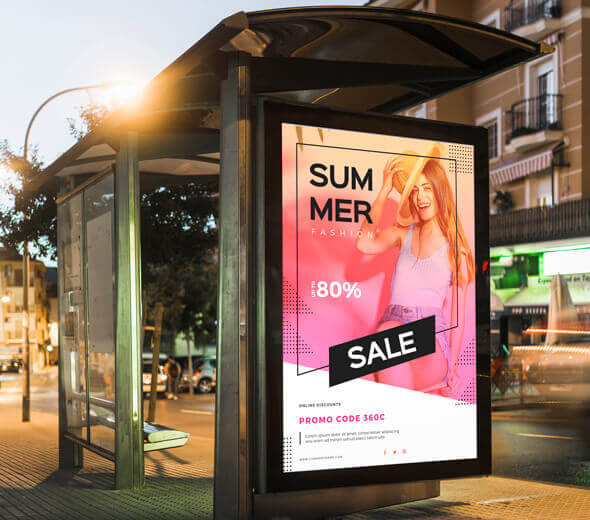
Transit and ride-share ads
Transit ads, like those usually found on taxis, ride-sharing vehicles, and small vehicles, have a unique approach. They aim to captivate audiences from an external point of view, particularly when these vehicles are on the move or during peak traffic hours. Some ads are even strategically placed inside the vehicles to directly engage passengers with the brand.
Especially amidst busy cities like Toronto provides an expansive audience for taxis and ride-shares. This dynamic setting creates a wealth of opportunities for brands to gain visibility and interact with a diverse audience with the scope of engagement.
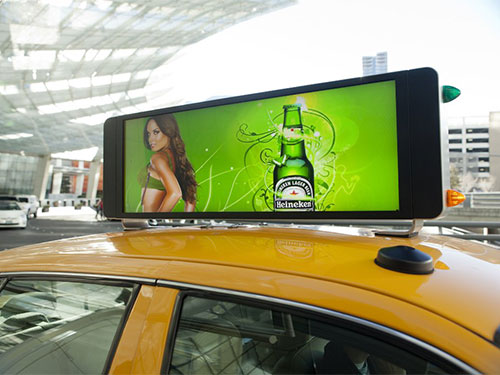
Airport ads
Airports are not just a transportation facility anymore; they also serve as global hubs that reach travelers from all corners of the world. They offer a prime opportunity for brand exposure and advertising. Travelers have the opportunity to encounter a multitude of advertisements, creating a receptive audience whether they’re waiting at baggage claim or passing through security.
In fact, passengers have come to expect and embrace advertising in airports, often perceiving companies and brands that advertise there as trustworthy and prestigious. Airports strategically place their ads on billboards, posters, and other mediums, capitalizing on the extended dwell time of travelers who purposefully shop and dine while awaiting their flights. This prolonged wait time provides a significant window for engagement.
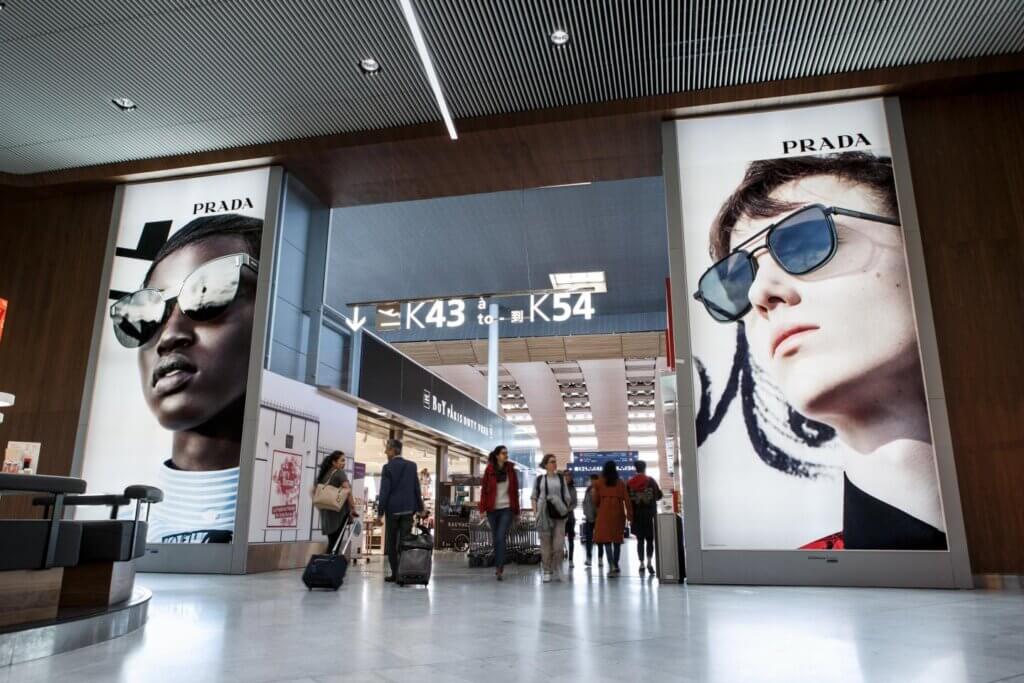
What sets airport ads apart is their laser-focused approach. These ads are intentionally tailored to meet travelers’ immediate needs to get maximum engagement. For instance, when arriving at a new international destination, passengers may be looking for essentials like mobile networks, transportation options, or travel guides. Ads for these services are conveniently placed outside the airport for easy access.
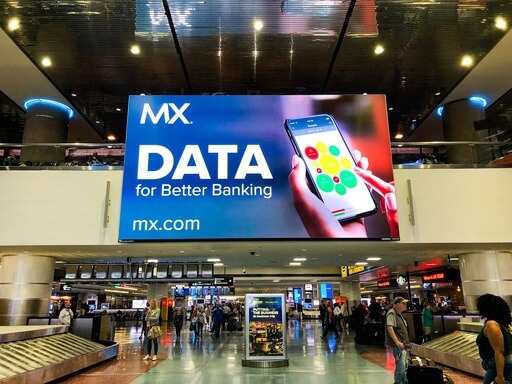
Moreover, brands like duty-free stores and others are strategically positioned within airports, providing travelers with easy access to their offerings. This targeted product placement ensures that passengers can swiftly access the goods and services they desire. In essence, airport advertising is a smart and effective way to connect with a captive audience and meet their specific needs in a prestigious and reliable environment.
Street Hoardings
Walking by your neighborhood, driving amidst the hustle of downtown or passing by a highway, the chances of you spotting a billboard or a poster ad in these places are very high. Street ads are digital, or poster ads displayed in areas where people can have maximum visibility.
these ads are presented as huge posters and in higher altitudes for a better view for everyone, these brands tend to be very popular and trustworthy with the consumers. These ad placements make it very easy for the message to reach the audience with its creativity. Even in this digital era of communication hoardings and street ads are widely appreciated and well received.
Transit advertisements have a dominant spell in the world of advertising, people subconsciously tend to seek out these advertisements, and they tend to stay with them for a longer period, the psychology of understanding the way consumers respond to these ads is interestingly discussed.
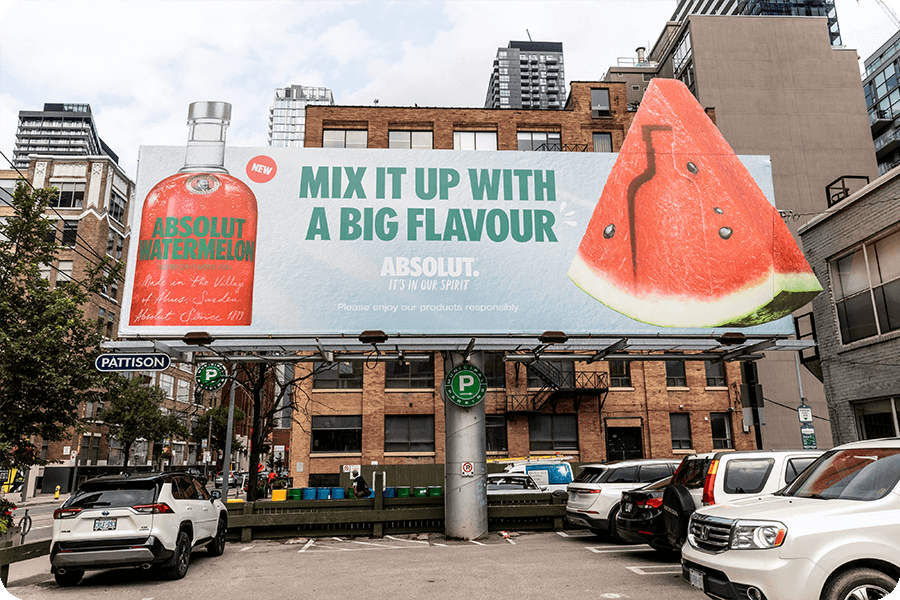
Measuring impacts and analytics
When it comes to the measurable impacts and analytics of transit ads, the first question that arises is how? How can we determine the results and responses generated by these ads once they’re out in the public eye? Well, transit ads have a method for assessing their effects, and it’s possible to gain insights into how audiences respond to the products.
Call to Action
While examining a specific ad or poster, you may have noticed scan codes for registrations, restaurant coupons, or sign-ups for events. These placements are strategically designed, and the viewer’s response and engagement with these activities are referred to as the “call to action.” This data is collected and recorded to inform future branding and advertising decisions.

Tracking and evaluation
Considering a case where individuals may not have their smartphones on hand, there are methods available to monitor the traffic passing by outdoor advertisements. With resources like Geopath, a nonprofit entity specializing in outdoor advertising assessment, employs a variety of tools and metrics to assess the effectiveness of locations. Using audience location measurement solutions, Geopath can gauge parameters such as the number of vehicles and pedestrians in an area. They can also deduce dwell time, which indicates how long people interact with outdoor ads, by evaluating driving and walking speeds.
Measuring ROI
The big question for any investment is to know the returns, the investment in transit ads is massive and most trusted, and there are various ways to track the ROI on these posters.
Benefits of transit advertising
Extensive reach and frequency
Buses, trains, trucks, and other modes of transport are a major part of transit advertising, as the name suggests this form of communication happens on the move. Buses, trains, and cars typically follow a certain route and they cover a mass range of audiences, most of the time these audiences are repetitive and potentially it could also engage with new audiences, this extensive reach and 24/7 on-the-move policy makes transit ads worth for the price by giving maximum results.
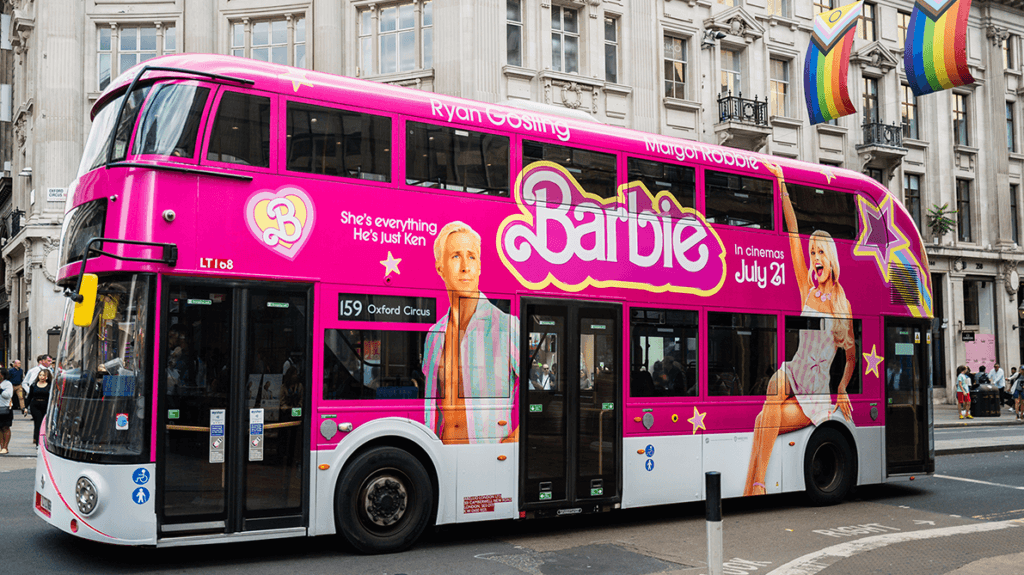
Value for money
Speaking of price, transit advertising for a campaign is a cost-efficient strategy, it is said that on average, a person needs to see an ad seven times in order to respond to it. Given that most commuters are in for a long ride getting through traffic, these ads can be highly effective. Compared to other forms of media transit advertising is very cost-efficient whilst giving greater visibility and engagement.
Geo-targeting
The placement of transit ads can be done geographically, it is a game-changer as it allows us to place ads in strategized locations and chosen neighborhoods, highways, buildings, bus routes, etc. You can target your audience with a specific geographical location.
Have a look at this creative ‘Look Up’ campaign by British Airways It captures the imagination of customers by creating interactive ads that become animated as airplanes fly overhead.
Versatility
The golden benefit in this form of advertising would have to be the adaptability and versatile approach, these ads don’t necessarily have to be a size fits all, you can literally gain the attention of any person from all age groups, and backgrounds, this flexibility allows you to tailor your campaign to fit your needs and goals. The response from this wide demographic audience may surprise you.
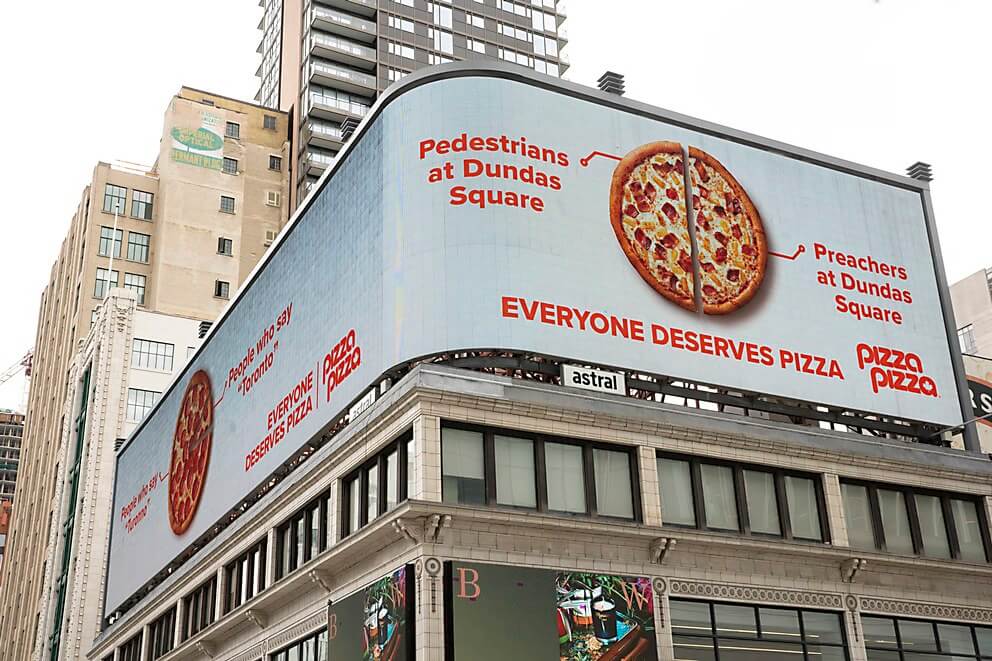
Highly effective
Transit ads have a way of presenting themselves, with their creative taglines, bold colors, and pictures, it makes one irresistible to not have a look. The large posters are always on your face which makes it difficult to ignore, This creates a great impact on the viewer with limited distractions, especially because of its placement, for example, a billboard ad across any flyover or highway will catch the eye of the driver for a long period of time, even while driving it grabs your attention, similarly, every ad placed is strategic and the psychology of the people and effectiveness of the location is being observed.
Repeated exposure
As discussed earlier, transit ads are a one-time value for money, they are placed in prime locations and vehicles that cover larger routes, these ads are repetitive and are in the face of travelers 24/7, an average of 60 percent of people take the same route for work or study purposes which means you have already captured the attention of a mass audience, this exposure is highly beneficial for any call to actions and ROI for any brand or product.
Conclusion
Overall, we can conclude by stating that transit ads are here to stay. There may be many alternatives and creative introductions for advertising, but transit ads are known for their organic nature and old-school presentation, there are multiple benefits to these ads, and time keeps adding on. Advertisers keep working towards engaging people in transit ads with their creative wit, which is why these can be stated out of home but will never go out of style.


